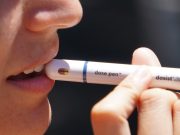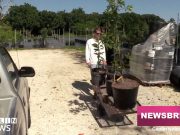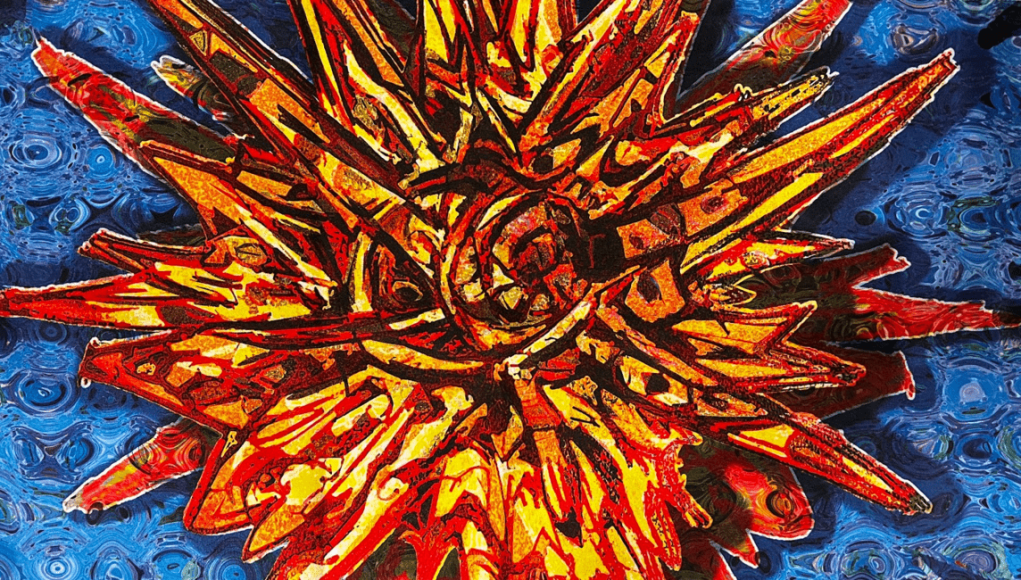Memorial Day marks the beginning of the hottest part of the year in Miami, one of the nation’s most sweat-filled metropolises.
Coincidentally, Miami-Dade County artist-in-residence Xavier Cortada recently held an exhibition at the Coral Gables Museum that focused on the negative impacts of extreme heat. He showcased three powerful paintings on the subject, one of which will be showcased on cooling towels produced by a New York company called Mission.
Dr. Gabriela Gerón-Piñón, the University of Miami’s director for international partnerships and business connections, attended the event. One look at those three paintings made her feel hot, even uncomfortable, as she viewed them.
“He’s showing what the future will look like when nothing is done,” said Gerón-Piñón. “It’s a painful fact.”
Cortada has dedicated himself to addressing global environmental issues through art since 2004, first focusing on rising sea levels ever since he traveled to the South Pole in 2006. He dove into heat-related issues 10 years later. The artist also works as a professor of practice at the University of Miami’s Art and Art History department.
He works with multiple media, from sculptures and tiles to digital work. He painted not only the three paintings but also six small acrylic-on-fabric pieces that resemble a teacher’s notes on the effects of heat on a chalkboard.
“I took the science and the data and I handwrote it like a school teacher,” said Cortada. “The symptoms of heat stroke, the symptoms of heat exhaustion explaining how people who are impacted because of their health conditions.”
In the first of the larger paintings, “The Personification of Heat,” he demonstrated what heat feels like when a person is unable to get cool.
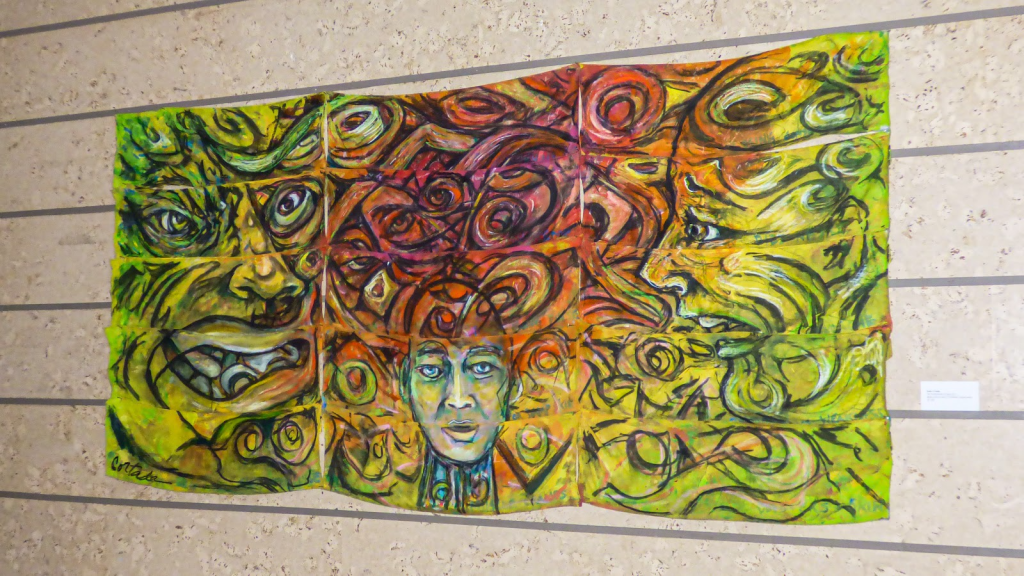
“We see positive aspects of heat, but I wanted to share another dimension,” shared Cortada. “I wanted to show the violence and chaos too.”
In the center is a person, a vulnerable “Miamian,” he explained, relentlessly attacked by the vicious heat at the left. The central subject is taunted by the face of “despair” on the right.
It’s meant to feel chaotic, according to Cortada, and how brutal the scorching heat can be.
“The heat also has a drastic and disproportionate impact on low-income and minority communities,” said Chris Valleta, founder of Mission, the New York firm that sponsored the show. “The bottom 20% of incomers in this country are five times more likely to die of a heat stroke. If you’re Black and work outside, you’re 51% more likely to die of a heat stroke. If you’re Hispanic [and work outside], you’re 91% more likely to die of a heat stroke.”
Cortada’s second artwork is titled the “Human Heat Map.” The colors go from green to red, resembling a traditional heat map. It also features Miamians who can’t stay cool, Cortada explained. The eco-artist said he wanted to portray the impact of heat.
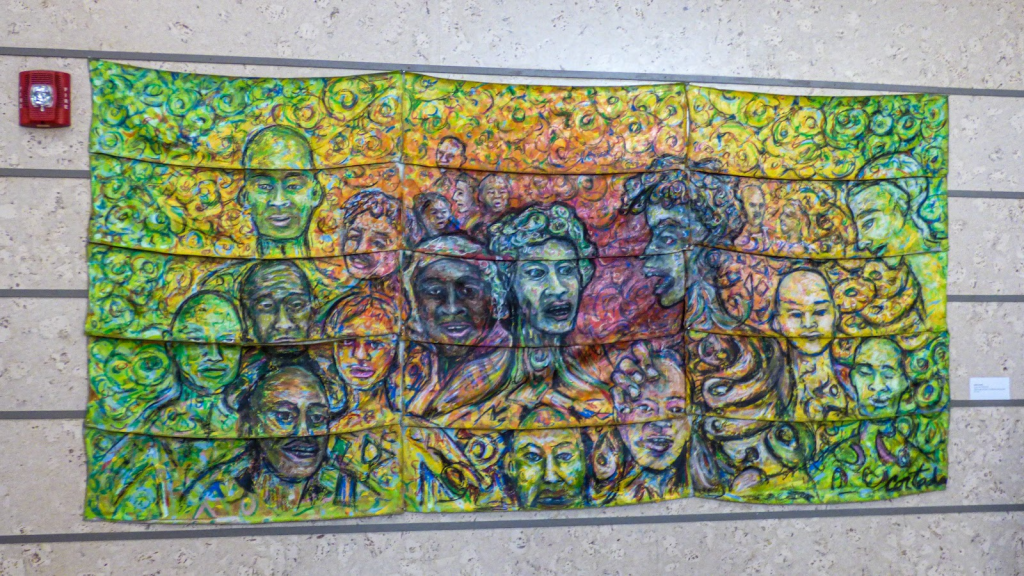
“Most of us wake up in an air-conditioned home,” said Cortada. “Take a few steps to our air-conditioned car and spend our hot, scorching day in an air-conditioned space. Then we get back to our air-conditioned car. While that is happening, people are suffering. And they look like that.”
Lastly, he depicts the impact of the flames of a fierce sun in his final artwork, “Scorching Heat.” This type of heat isn’t comforting but violent and lethal, Cortada said. It demonstrates the reality South Floridians will live in if science is ignored.
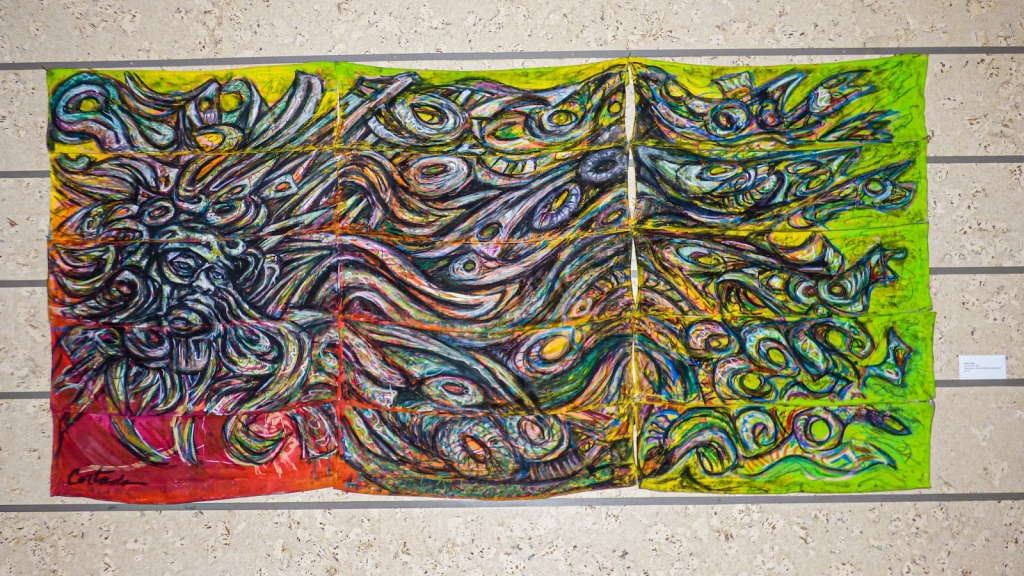
Chief Heat Officer of Miami Dade County Jane Gilbert supplied the eco-artist with recent information and helped produce the event.
“It’s getting hotter for two things,” said Gilbert. “Not only because of climate change but how we develop as a city with more asphalt and concrete and less trees and vegetation.”
He stressed that this wasn’t just an art exhibit but a social campaign exhibit. As part of the Xavier Cortada Foundation, the event was designed to bring forward the damning facts of extreme heat and to ignite the conversation inside and outside the museum room. The more people are aware of the dangers of heat, and know how to protect themselves from it, the better chance the community will be able to survive.
“By the time most FIU students get to 50 years of age, a quarter of their days will be heat days,” said Cortada. “For comparison, 30 years ago, only 13 days of the year were hot. Two weeks.”
The eco-artist encourages students to participate in the conversation by taking a picture with sunglasses and captioning the post with #KEEPCOOLMIAMIDADE.
“Art has the power to help you feel connected,” said Cortada. “It’s a collaborative process.”


